

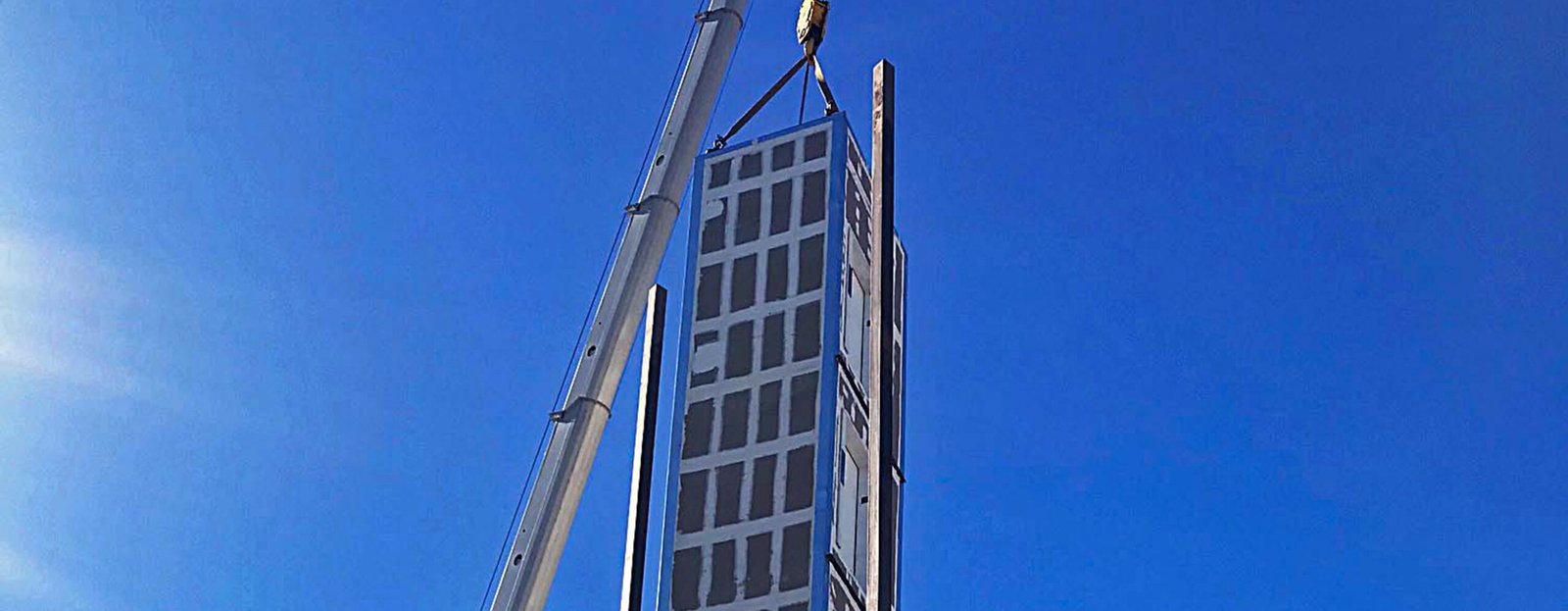
Modular Elevator System for Modular – The Modular Elevator System from Modular Elevator Manufacturing is the low to mid-rise solution for all types of buildings. However, due to the familiarity with how modular construction works, our system fits in seamlessly.
Also, modular elevators were introduced over 20 years ago to the construction industry. This led to the canard that they must be placed on the outside of a structure. Some even are mistaken in their belief that they are only for retrofit projects.
Sure, a modular elevator system can be on the exterior of a build and can be use as a retrofit. However, the bulk of the project we are associated with are new construction. Our flexibility in placement is unsurpassed.
This flexibility was demonstrated in a recent project.
Modular Elevator Systems are indeed flexible. They can go into the project early, late, when you want or when you need it. It is off the critical path and can be placed inside or outside as you desire. Not to mention the cost and time savings the high-quality commercial elevator affords. So, is the MEM system the perfect fit for you? Yes. The MEM Modular Elevator System is the elevator you have been waiting for.
So if you have a low to mid-rise project, contact us for a FAST TRACK QUOTE. If you want to explore more, we encourage it. You can start your journey by taking a LIVE VIRTUAL TOUR. During the tour we will openly show you how we produce our high quality MEM Elevator System. We will also answer any of your questions.

Elevator Poll Opportunity to Change / Oct, 2023 – As most of you know we have been conducting a one of its kind poll. For the first time a poll was sent to the entirety of the construction industry regarding elevators. Architects, general contractors, engineers, design build firms and elevator professionals responded. Additionally, to have more clarity and to focus our efforts on real solutions we held a series of open forums where we discussed the results of the poll. We heard anecdotal stories that confirmed our findings and consistent reports of issues regarding the current traditional elevator industry.
After the poll and subsequent analysis we can say there is an opportunity to make changes for the better in the construction industry.
And that always was the point. The poll confirmed the problems that had always been rumored. Now we can begin a revolution to foment change that is solutions based. So in this article we are going to examine each of the five inferences the poll questions and forums confirmed and make some general suggestions for improvement.
After all, our desire is to improve an industry that has not substantially changed in how it installs elevators or deals with the construction industry for over 150 years. To make improvements we wanted to start with actual information from the people that deal with elevators and have to live with the challenges they present.
And then start the conversation about solutions. This is the beginning of the discussion regarding those solutions. We know where we have been and now we must start charting a path to where we are going in the future.
The polling and results of the open forums are pretty telling. The current way the construction industry and elevator industry function or rather doesn’t function, is a problem. Both sides have points and counterpoints, but change is stuck because solutions are slow to come forward and then equally slow to be embraced. The poll reflected this with a well documented reticence to adopt each other’s, other options.
We are not hiding the results because we want a full discussion of experiences that back up or reject the results and other inferences from the data we missed. The bottom line takeaway; there’s a problem. So much so that some are grasping for solutions. But don’t take our word for it. We encourage you to look at the graphics and add your comments below as to what your impressions are or the inferences you draw.
This is the beginning of thinking through the issues and not the final word. Just a discussion of possible solutions. This is a continuing of the dialog. We look forward to your input and feel communicating with continued analysis will help both industries (construction and elevator).





With that said, here are early inferences drawn from the poll and open forums:
The overall customer experience is negative regarding the elevator industry. Over 88% feel the experience was horrible to needs improvement. Over 40% felt it was horrible to barely tolerable. No sugar coating it, it is not a good result. However, keep in mind this attitude shifts dramatically depending on occupation or role. 90% of design professionals believe their experience to be generally good. Easy to use websites for plans is a big help. Turns out however websites can’t install an elevator. This also means that the elevator industry focuses effort on the sale of elevator units, not difficulties of those downline from the decision.
The results we found are uncomfortable. Keep in mind that this poll was sent to the elevator industry as well, so they know there’s a problem. The elevator industry front loads their efforts to the sale of the elevator and more importantly to the sale of the maintenance plan. That is their model. They know that if they are chosen they get decades of maintenance fees. So what can change the elevator market and its reputation? It is the market itself. Not to push the problem off to the customer, but until alternatives are explored by the buying public, the elevator industry will continue to be the monolithic monopoly it has become. Immediate considerations is to refuse to purchase an elevator with proprietary parts. Proprietary parts are the hook that keeps maintenance forever attached to the sale and handcuffs the buyer to the elevator company.
Also, consider moving the pain of the elevator selection to the front of the process. That is where longer-term issues can be addressed in the contract for the elevator. Once you are into or past the bidding stage it is in all likelihood too late to make a change as the hoistway placement and size has been determined. One solution being used by a frustrated builder discussed in our forum was to make the hoistway opening big enough to accommodate nearly any elevator. He felt it gave him more flexibility to shop and compare. The elevator problem is so great that losing building space was considered to be a reasonable solution.
The better option is prioritizing the elevator purchase before the drawings are complete and always purchase elevators with non-proprietary parts.
Delays are a huge issue. 65% in our poll say the elevator always creates delays. The nature of how conventional elevators are installed is the problem and solutions maybe limited unless you look into alternatives such as modular elevators. The hoistway is built along with foundation and there it sits until power and a controlled environment is secured.
At the end of any build, the pressure is on to finish up. Tensions run high as time is running out. One person we talked with about the frustration said, on a job the elevator company pushed out completion more than 6-months passed the expected occupancy date. Understandably he was apoplectic, but stuck and he knew it.
The traditional elevator industry has no solution for the pace of the install. They will be done when they are done. The timeline for the elevator crew is often times at odds with the construction manager’s expectations. Increased communication can be a big help, but this can’t be just chatter. There must be clear timelines to be adhered to and notification of steps to completion must be communicated clearly to everyone involved. This is especially true regarding life/safety trades and when they are checked off as complete. One phone line can cause delays of weeks and costly change orders.
Explore other options. With modular elevators the elevator arrives already installed and can even be used as the construction hoist. It sets in a couple hours and the start up is a week long process not months. With traditional elevators, back ordered components, over-stretched elevator crews, and even poor weather can stall or even stop installation. When the installation takes place in a factory there are no such delays.
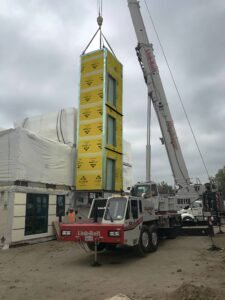
The most important consideration regarding the purchase is on-time start up and use. But there is no control over that with current industry standards. The conventional elevator is an immovable object stuck on the critical path. That creates a feeling of loss of control or helplessness.
Cost, Type of Conveyance and Structure are also concerns that sometimes present few options for improvement.
Regardless of the type of elevator, the inspection process is out of the hands of the elevator contractor in most jurisdictions. These must be scheduled in advance. So the solution is to make sure you have a checklist of completed items, before the inspection is scheduled. Call backs can mean costly change orders and delays.
When it comes to costs that is often linked with conveyance. Watch out for being oversold. It has been relayed to us in any number of conversations that traction or roped units are being recommended for extremely short travel distances. The initial cost for traction units is higher as well as the lifetime costs through maintenance agreements. Quit over buying your needs.
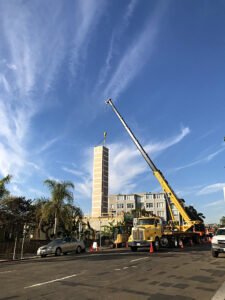
Additionally, cost of the elevator does not encompass all the ancillary aspects of the build, so at the end of the project the actual investment in the elevator is most often not known. How much money per stop is wasted due to call backs of mud and rock crews, flooring installation and painters? One construction professional indicated the traditional elevator costed him $30,000 to $40,000 more per stop due to call backs of other trades. He found another alternative.
If you want the elevator off the critical path a modular elevator is the route to go. The market for modular elevators is expanding with large elevator companies offering alternatives overseas and new companies starting domestically. Modular is the future for low and mid-rise applications.
There is flexibility! No one polled automatically keeps the same elevator company due to past experience. This means change is possible. But it seems the choice is pushed back to the bidding process creating a lack of flexibility and specs makes innovation difficult.
Using your flexibility to make choices early is the best alternative. By the time you get to the bidding process all of the flexibility you once had is gone. You are locked into the same traditional models that you have always used.
The bidding process leads to specs that stifle innovation. As we have learned and discussed in our forums, elevator companies largely ignore the construction specs in any case. So why push the decision out to or past the bid process were you are now under more of the elevator company’s control?
By the time you are passed the bid phase, it is often too late to consider other alternatives without additional costs. All hope of innovation is gone. Ultimately, construction professionals are often locked into just a couple bad choices so leave your options open, it maybe counterintuitive but research and decide early.
Finally – Start up is the elephant in the room. It is a huge issue, but out often out of your control and even out of the control of the elevator installer, especially regarding inspection and final approval. Cost overruns are constant.
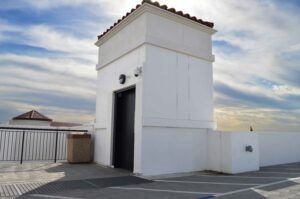
One truism confirmed in our conversations is that lack of communication costs time and money on the project. One example was the push by the general contractor to expedite the elevator inspection. It led to the elevator being fully ready but life/safety aspects of the building were still not complete. That meant a failed inspection and then change orders to return for a second inspection. Open communication would have resolved that issue before it became one.
There are options that include a fully functioning elevator installed that can be used as the construction elevator and then converted to a passenger elevator once construction is complete. Knowing it runs and passing inspection as a construction elevator, is a big benefit to final turn over of the unit. It certainly speeds the elevator to complete readiness faster.
This poll and open forums led to a great new starting point for the construction industry to begin to change in how it views elevators and all the pitfalls. It also gives Modular Elevator Manufacturing and others in the elevator industry the perfect opportunity to change the industry from the inside out. We again are asking you to join us in this revolution. That does not mean buying a Modular Elevator Manufacturing System. It means looking at the elevator industry afresh and deciding early on what mode of vertical transportation works best for the project you are on.
We will continue to update and change our recommendations as responses pour in. Based on the response so far, it is evident there is a problem out there and we can begin to fix it together. The industry can change and improve its image, product and installation methods.
Also, by working together we can reduce headaches, improve start up times and cut costs. That will lead to better strategies and decisions when including an elevator in your project. Elevators will never be problem free, but they can be improved upon and that is our hope as we lead an Elevator Revolution.
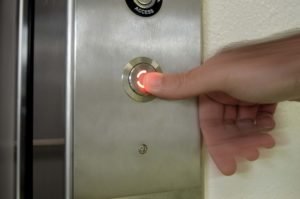
In the mean time if you want to know more about the MEM Elevator System please let us know by clicking a link below. You can take a virtual tour of our factory where we openly discuss our process and the elevator industry. You can also request a Fast Track Quote if you have a project in mind and are curious about the solutions we offer. One more reminder – please comment below. Your input is important.
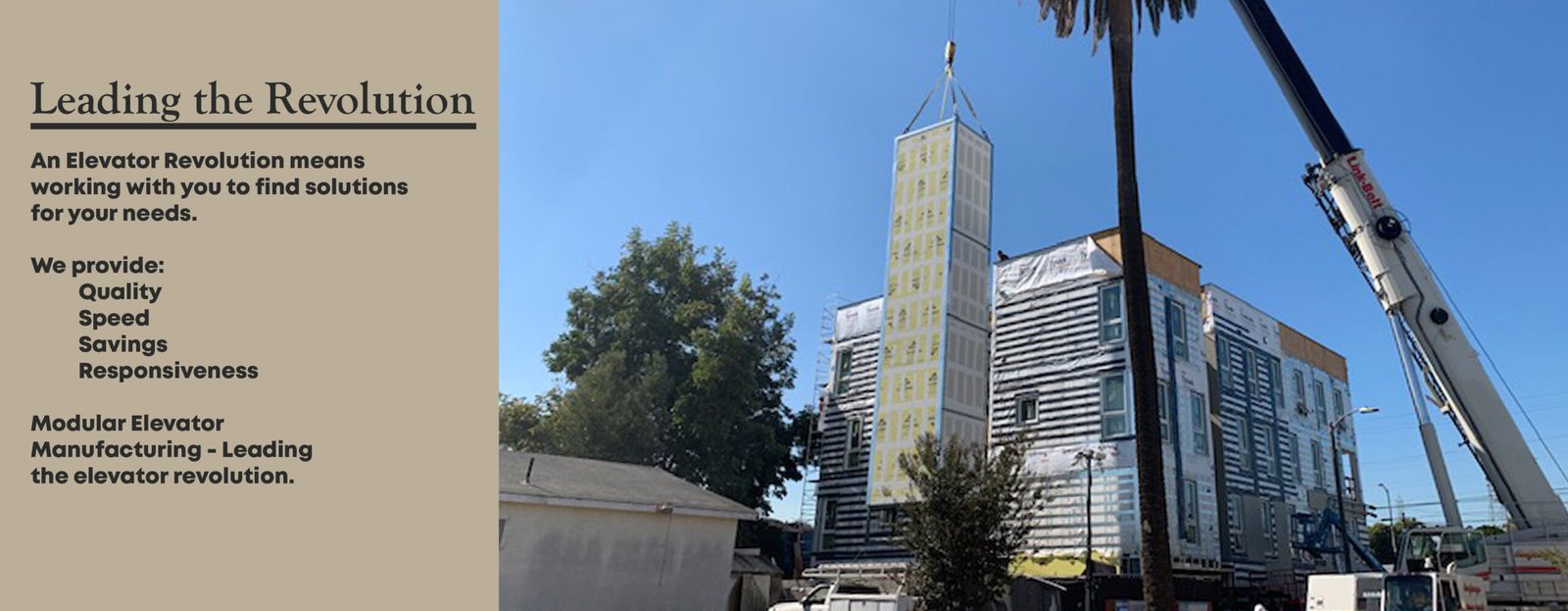

Modular works for Watts Works. Can it work for you? Watts Works, an affordable housing project in Southern California demonstrates, the need for modular building and modular elevators.
As the need for supportive housing is immediate, speed is of the essence. Also, costs are important to minimize especially with limited local, county and state resources available.
The logical solution to providing fast, cost conscience housing is modular. In the case of Watts Works, shipping containers became the primary component. The design was completed and production of the units began even before the foundation was set. Also, using shipping containers factory outfitted with kitchen appliances and largely finished interiors made the project much faster. The units are then set quickly and efficiently. Also, the cost is significantly less. That is no theory but the experience of Aaron Sassounian, Partner with Daylight Community Development.
Sassounian said “We want to be good custodians for the tax payers, but provide quality housing and get people in the units as quickly as possible.”
That is the vision of Daylight Community Development. They are specialists in affordable housing and their overriding passion is to end chronic homelessness in Los Angeles. They use every tool at their disposal including recent zoning and regulation changes. Financing the construction also takes outside of the box thinking by using any available public funding sources. Daylight also believes that modular construction is key to fast, on-time completion with a modular elevator being the final piece to the puzzle.
Daylight is a leader in the affordable housing arena, blazing a new trail in building supportive housing faster and cheaper with maximum social impact.
The understanding of the totality of the building process from design, development, construction and financing makes Daylight vital. Daylight is a leader in the affordable housing arena, blazing a new trail in building supportive housing faster and cheaper with maximum social impact.
In every build the elevator is a critical part of the project. That is because it is one of the items on the critical path that can cause more headaches, confusions and delays than nearly any other building component. That makes a high-quality elevator crucial. It must also go in when the builder needs it on their time schedule and is started up quickly. The MEM Elevator System accomplishes that quite well. But just as important there needs to be an open line of communication between the elevator manufacturer, the contractor, architect and developer. (Continued below the photos.)

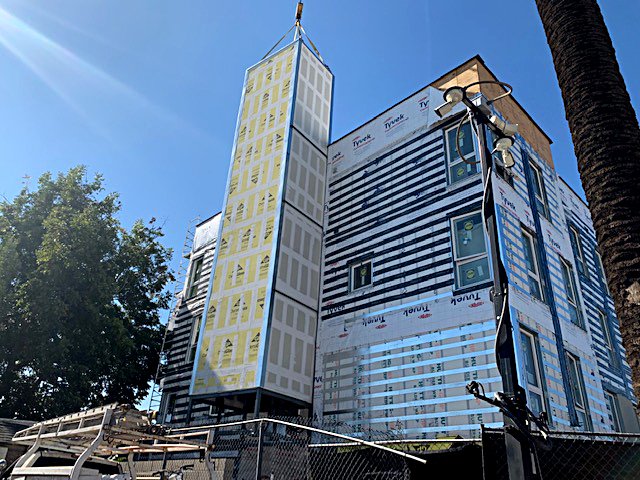
The installer on this project was TLShield sister company to Modular Elevator Manufacturing. Vice President of Sales and Marketing, Hugo Beltran was the lead contact. Sussounian said, “Hugo was super responsive and easy to work with. He talked us through the process making it a great experience.” MEM and TLShield helped keep the project on time and on budget.
Combing the product with superior customer service means that together the MEM Elevator System and Daylight Community Development will continue to partner to address the homeless problem. Proof of the partnership is three more projects are already in development with the MEM Elevator System speced in. (Continued below the Photos.)
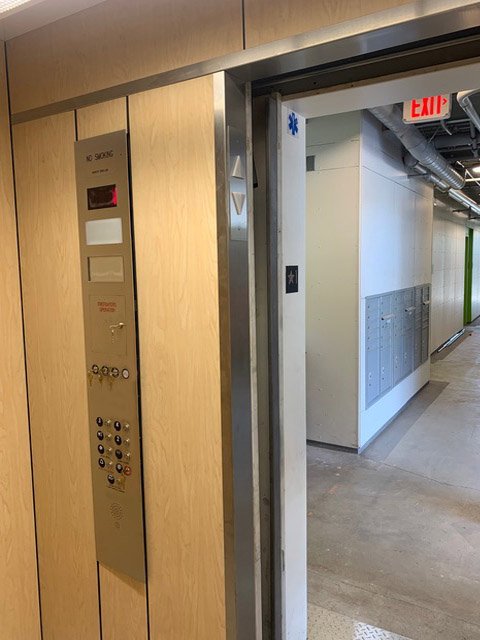

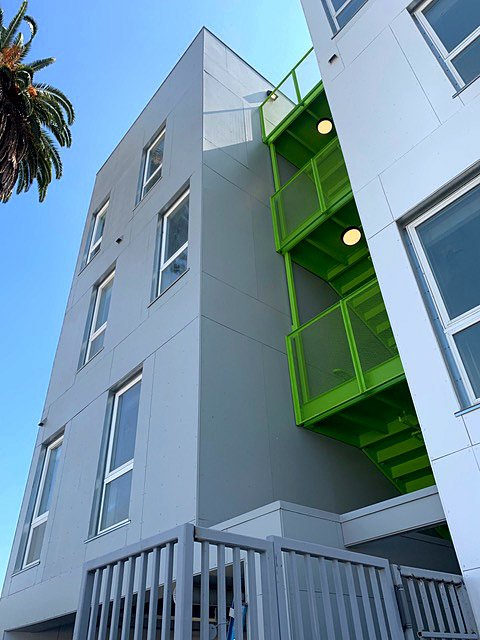
So, modular indeed worked for Watts Works to help combat the housing and homeless crisis and will continue to be a part of Daylight in the future…can work for you as well. Do you have a project with a strict deadline and little forgiveness if it is missed? Do you have a project where speed and savings is important and you are tired of excuses and delays? We are your solution.
We will work with you, provide high quality, speed, possible savings and responsiveness. Things that you probably won’t find elsewhere in the elevator industry. So if you have a low to mid-rise project, contact us for a FAST TRACK QUOTE. If you want to explore more, we encourage it. You can start your journey by taking a LIVE VIRTUAL TOUR. During the tour we will openly show you how we produce our high quality MEM Elevator System. We will also answer any of your questions.

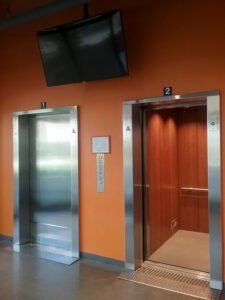
This month we are focusing on modular elevators inside the building. Believe it or not one of the most common questions we face is can the MEM Elevator System be placed inside a building?
When the product was developed as a response to the Americans with Disabilities Act in the 1980’s the concept was to provide a vertical transportation solution as fast as possible. To that end, it seemed logical (and probably was) to just set the elevator next to the building. Then just cut the holes for the elevator doors and just like that a fully installed elevator in no time. The concept worked and worked well and became synonymous with exterior placement. However after seeing the success, quality and speed people started asking for modular elevators inside the building in new and retrofit projects.
Also, the confusion is partially my fault. I have been the sole marketer for the modular elevator industry for quite sometime. So, I would be remiss if I did not take blame. But I have a good reason…it just made better visual sense to tell the modular elevator story where you could plainly see the hoistway standing along side the building. My bad.
So to make up for my shortcomings below are a few projects inside buildings.
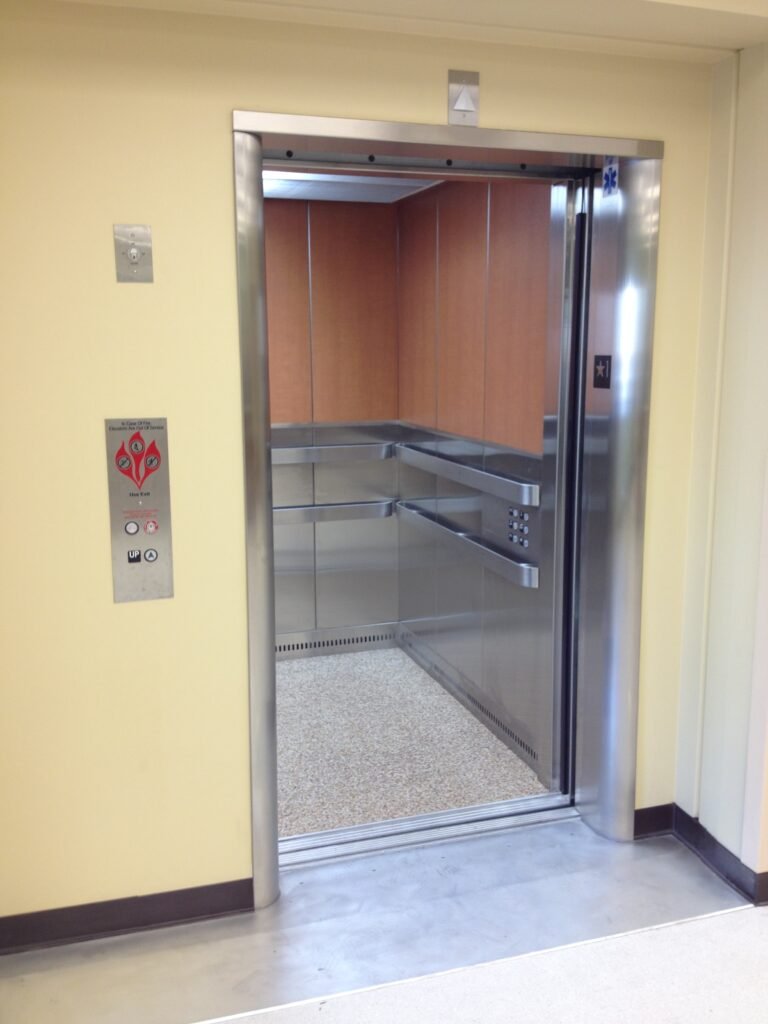
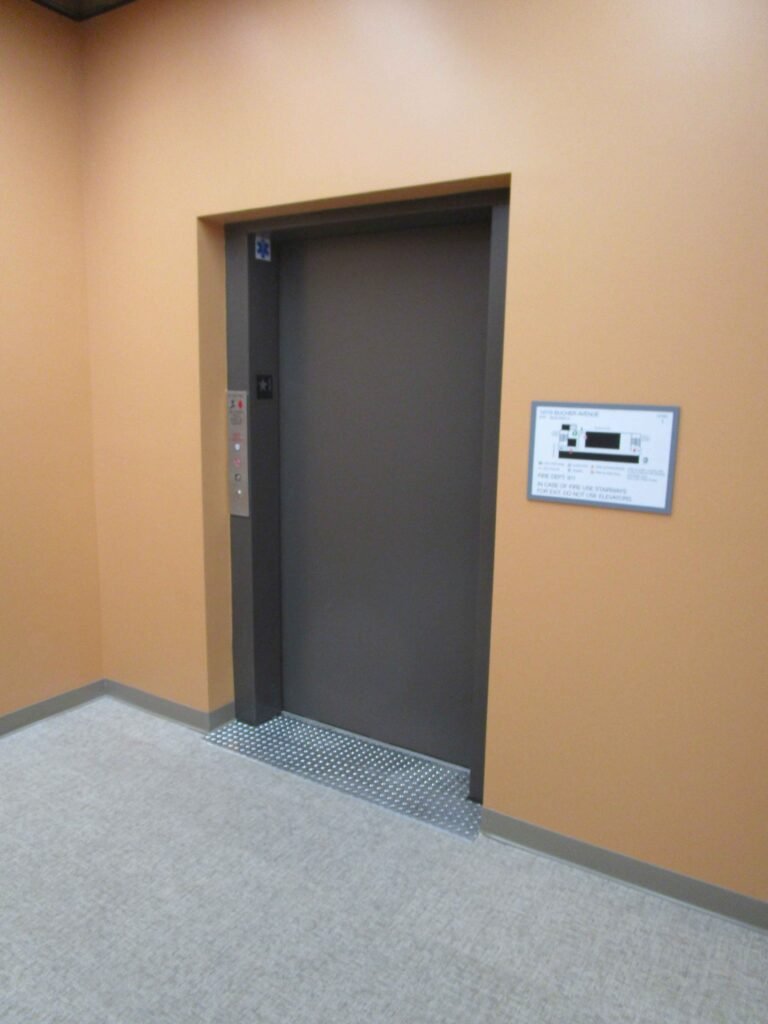


You will notice they can be in the middle of a large room or seamlessly built into a wall. It does not matter. They still go in the same way.
Usually, early in the project once the foundation is poured and the pit is completed the elevator is craned into place. The building is then constructed around the fully installed modular elevator. To make things even easier the MEM Elevator System comes with a fully drywalled hoistway inside and out.
In the video below you can see how fast and easy it is to place an elevator and build around it. Check out the elevator being placed at about 20 seconds in. The second elevator (that was also used as a construction elevator) is placed at the 59 second mark.
When it comes to retrofit projects, when the building is ready to receive the elevator a hole is cut in the ceiling and at each floor. The elevator is then slipped in with no problems.
So regardless of your project, if you are needing a midrise elevator we are your solution. Modular elevators inside, outside, new or retrofit we are your solution.

For nearly twenty years Modular Elevator Manufacturing has been leading the elevator revolution. Like any revolution there are milestones or measurements that show the growth of that movement. Markers that point to the “normalization” or general acceptance of a movement. These include: a global awareness of the product and methodology, an overall increase in market acceptance, implemented examples of the concept in completed projects, general acceptance and understanding of the advantages, and ultimately expansion of the market. Now, MEM is pleased to say, “Next stop transformation”.
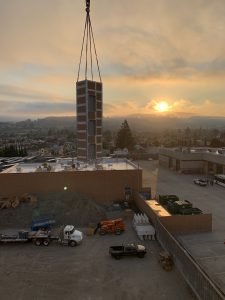
Those milestones are being realized. Now the focus is shifting from the necessity of revolution to the reality of transformation in the elevator industry itself.
When the concept of the modular elevator was first conceived, it was as a response to the Americans with Disabilities Act (ADA). Three individuals put together the original plans and started producing modular elevator units. Their concept was largely designed to sit beside an existing structure to easily and quickly make an old building compliant and more accessible. Great idea!
Many of those early units were sold and installed. But a modular delivery approach requires an understanding of construction and elevators. Ultimately, an overall lack of experience in the construction industry led to many difficulties in the installation process along with other issues. However, suggestions from the field for improvements often fell on deaf ears and so the concept, although sound, struggled to take off.
Enter TLShield. As the fledgling modular elevator company fell to failure, Tom Shield, who had installed many of the early units, took a bold step. His company, TL Shield and Associates began a new entity Modular Elevator Manufacturing (MEM) dedicated solely to the improvement and production of modular elevators. They instituted many product changes to improve the overall quality and installation process. The MEM Elevator System was born and they began producing the solution that many were looking for.
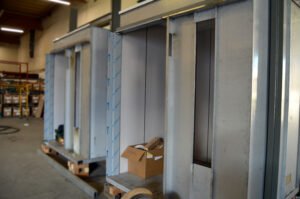
Since that time a steady march towards revolutionizing the old, tired model of conventional elevators began. Few realize the elevator industry had largely remained stuck in the mid-1800’s in the way an elevator was installed and produced. Since before the Civil War hoistways were built in a building and then the elevator was painstakingly assembled in the shaft. Crates of parts would arrive to be assembled in a closed, challenging space. That is still the way it is done in the conventional elevator sector. In an honest moment, the entire industry would agree, that makes no sense at all. Modular elevators changed all of that. They are produced in a factory, hoistway and all, shipped to the location and then the fully install elevator is lowered into place in a couple hours.
Since the beginning MEM realized that the product was revolutionary, but the revolution could easily die if a proactive approach to enlightening the construction industry failed. So education and information became the model to market the concept and high-quality product. “Next stop transformation” would take time, patience and effort but worth it. Change in any monopolistic industry is a slow steady undertaking and does not happen overnight.
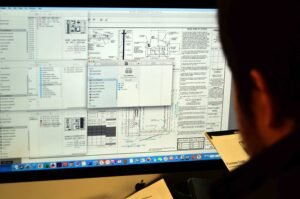
To propel that change forward, the new model became education in place of the expected sales pitch. Older iterations of the MEM website contained a voluminous amount of data, facts and specifications. It even offered up links to drawings and engineering information. Previously many considered that kind of information proprietary to their brand and did not have plans on line. However, we found transparency was the best option in how we arrived at our improvements, created awareness and helped to answer questions.
This includes passing knowledge freely to other elevator companies. Sharing and opening our facility became a routine practice and is still in practice today. When Covid hit, we offered for the first time a one of a kind virtual tour of our factory to anyone that asks. That openness and outreach remains the only online virtual tour of an elevator production facility in the world. No one opens their doors as we do. We know allowing openness and full disclosure is the only way to make our “next stop transformation” a reality.
If you want to take advantage of our live virtual tour you can do so. Just click the button.
Early on schools in California embraced the modular concept and the idea that a modular elevator would be the best and most logical choice for ADA compliance. As the sole leader in the industry we were often specced into those projects. However, I remember the day that a modular elevator was specced into a project that was not in the education sector. Obviously the day passed with no fanfare or popping corks, but I knew things had changed.
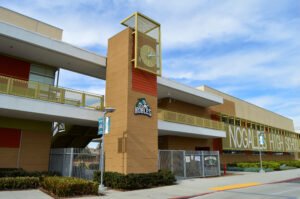
Product acceptance on a whole new level had just occurred. That was followed quickly by approved architect training through AIA, integration into new building projects not just retrofits and design/build plans being altered. This was all to incorporate our modular units into ever-widening applications regardless of the type of construction method.
We also found that big players in the construction industry were more than just curious, they were serious. They saw that a fully installed elevator set in place before lunch break was a big deal. The realization and reality of an elevator off the critical path had enormous implications. The potential of that removal from the critical path changes everything. It reduces call backs of other trades and the entire timeline and costs. Suddenly, the light bulb clicked on…there was a better way.
Acceptance of the product was also demonstrated by increases in our Fast Track quotes, formal quotes and ultimately sales. In just two short years we had to double our manufacturing floor and we are currently at all-time sales heights requiring us to look at an additional expansion or space. We now ship nationwide routinely with projects as far away as New York. All of this success was due in part to our commitment to modeling of the concept in how it works and the advantages.
Commonsense it seems has disappeared in some ways from our society. The hardest way of doing things has replaced ease and wisdom as in the construction industry’s use of conventional elevator companies. Unfortunately, their sales concepts is not one of openness and sharing. Instead we learned through our polling efforts they were sometimes sowing seeds of confusion an exclusion. There was just one way…their way.
“The elevator company knows there are not many alternatives for installation so they capitalize in the safety of us needing them more than they need us.”
Poll Respondent – August 2022
One of the respondents to our poll said it best, “It’s unfortunate knowing when entering into a project where elevators are to be installed that there will be issues and complicated schedule situations. The elevator company knows there are not many alternatives for installation so they capitalize in the safety of us needing them more than they need us.”
We have become that alternative and change so needed. As our mission is not just to offer concepts, but actual projects that clearly demonstrate higher quality can accompany speed through manufacturing.
Most importantly we stress we need each other in the building process. We know that if you just say something is better, faster, easier greener, and more cost effective it would come off looking false no matter what the intentions. Listening and conversation is our mandate.
As a result we developed cohorts for each vertical construction segment. And we developed a short poll to enable us to hear what is wrong with our industry anonymously. We do not horde the results but in an unprecedented move provide the data openly to everyone that wants to see it.
Help us improve the elevator industry by taking our short poll. It will help us shed some light on industry improvements. It is anonymous and just five short questions.
We feel the product makes the most sense and with sincerity we share what we know and have learned.
It is a huge difference as we recognize that we have succeeded where the previous company failed by listening, understanding the elevator industry intimately and making needed change. Intuitively we knew immediate improvements that would make everything better in the engineering, design and installation. Honestly some were what we would call no-brainers, plain to see from the decades of elevator experience we brought to the table.

However, it is easy to be blinded by past success. So we continue to innovate, expand our knowledge and to assess our projects from the perspective of architects, project engineers, construction managers and owners. The communication is crucial to continued success.
It is important to know that this does not mean every idea is a good idea. We methodically look at new ideas against what has worked. We think deeply and don’t jump to quick conclusions. This has led to an ever improving product line that exceeds expectations.
As our market share continues to grow we know our ideas and concepts will be and have been copied. Sometimes they are just pretenders that think anyone can produce an elevator. They struggle with quality and often seem to grope in the dark with innovation. But, when you are driving towards the “next stop transformation” philosophy ultimately the next stop includes others in the business. When you are successful at what you do people will follow.
The result is two new reputable entrants into the modular elevator industry. They have seen growth and want to be a part of the revolution. It may surprise you but, we have no qualms with that as long as they copy our quality as well. As a pioneer in the modular elevator business we are glad to have help building on what we have done.
Resolute Elevator in North Carolina has stepped up to manufacturing modular elevators in a big way and they are seeing great growth. Their background is similar to ours. They were in the elevator business for several years and even installed some modular elevators. Likewise, they were concerned for the elevator riding pubic and the concept itself when they found the modular offerings they used less than the quality they and their customers demanded. At Resolute they felt innovation was lacking and poor workmanship was the order of the day. They understand that if modular elevators become equated with substandard quality then the better concept of a manufactured elevators would struggle. They have even participated in one of our cohort groups. Their input was invaluable.
Big congrats to them and best wishes!
But a second entrant into the modular elevator industry is more curious. Thyssenkrupp (commonly called TKE), having witnessed the wisdom and potential market share of modular, has decided to stick their decidedly big toe into the elevator revolution we began so long ago. As we all know big companies move slow and ponderously and big elevator is no acceptation. After all we have been grabbing more and more of the elevator market for over a decade and our innovations have now become a staple in many construction segments.
Why does TKE embrace change now? One can only speculate. However as we know in the “next stop transformation” theory, new entrants will come from a number of sources. We are just satisfied that they, although late to the party, see that modular is viable and the future. They are just now testing their new modular system in Hong Kong, but they will eventually make it to our shores. This is not just vindication, but product justification. Now they see it and soon everyone in the construction industry will as well.
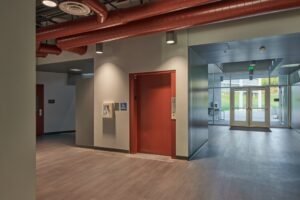
Overall this is proof positive that what we are doing is winning the revolution.
Next stop…transformation and we have been leaders in that effort longer than anyone else.
If you are interested in being a part of the elevator revolution, we encourage you to dig, explore and ask plenty of questions. We are ready and willing to be a part of your period of discovery. To get started we offer a couple opportunities below. Just click a button.
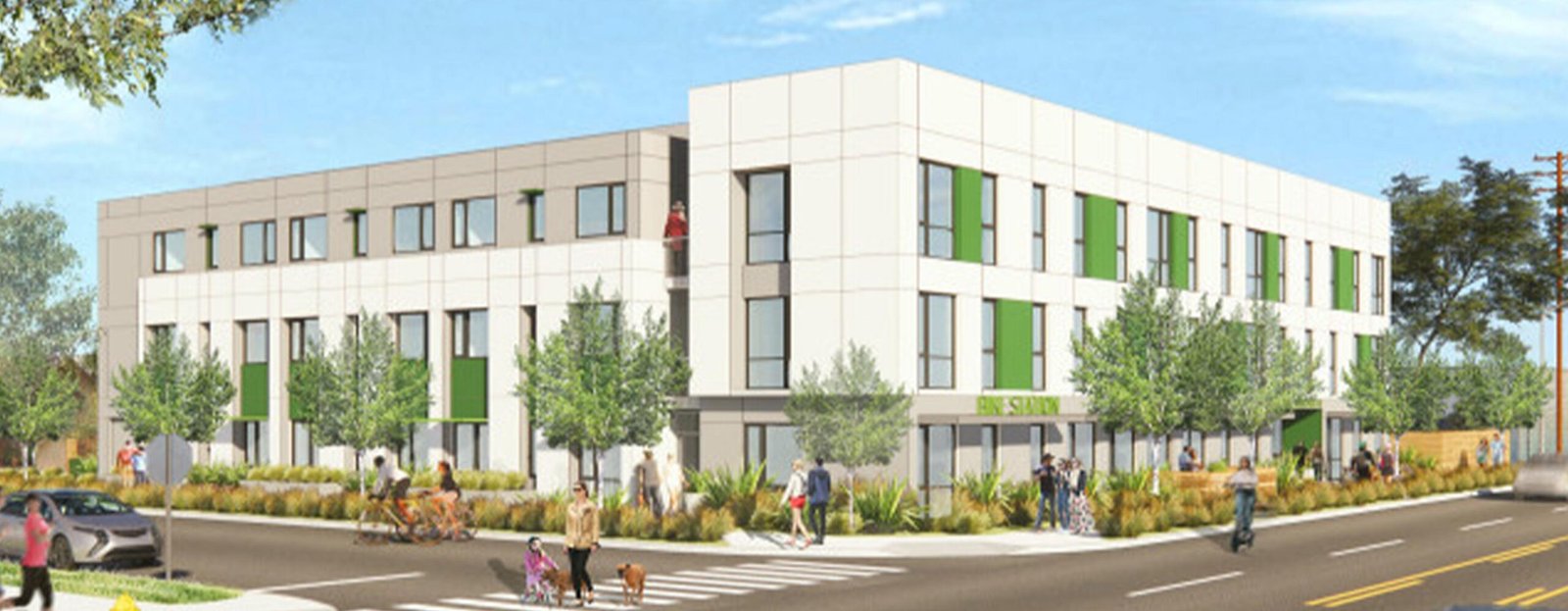

A modular project always benefits from using modular elevators. The primary reason is that the resources and knowledge are already in place and everyone understands how the modular concept works. There is comfort in understanding the modular concept.
But the benefits go beyond just mere comfort. It fulfills a need to increase speed, time and savings. Also, the MEM System does not interrupt the benefit of a modular design. In a recent Los Angeles area modular project. Studio One-Eleven designed three supportive housing buildings all based around the modular concept, so using a modular elevator was an easy choice. The advanced modular design of the project and MEM allowed the Vanowen Apartments, by use of the modular concept, reduce costs 30-35% below conventional construction. That meant a more efficient use and speedier occupancy for the chronically homeless of Los Angeles.
“Modular designs we are perfecting with our partners significantly reduce cost and construction time,” said Michael Bohn, Studio One-Eleven Senior Principal, AIA. “We may have provided the model to build it faster, cheaper and better for the affordable housing sector which could help alleviate Los Angeles’ housing crisis.” Modular Elevator Manufacturing was proud to be a part of the project.
The MEM Elevator System went in smoothly as part of the modular project package and impressed those on the project.
The benefits realized are due to an understanding of the modular concept as a whole. The pit needs to be perfect so there is a seamless match to the rest of the structure. We provide an easy to use template that assures ease of installation. With that in place the elevator easily slips in.




Once the pit is complete the fully installed elevator goes in before lunch. Then when electric available onsite, the crew returns to start up the elevator. The process is so fast that the modular elevator can be used as a construction elevator saving money on the project.
If you have a project in mind and want to speak directly to one of our representatives fill out the Fast Track form. We can provide you a thumbnail number in hours.
Lastly, this type of project takes a team. So, we would like to mention our partners in this project. Our good friends at Howard Construction were professional as usual. Their team did a great job! Award winning Studio One-Eleven provided a unique design based on the modular concept. Also, TLShield placed and started up the MEM Elevator System.
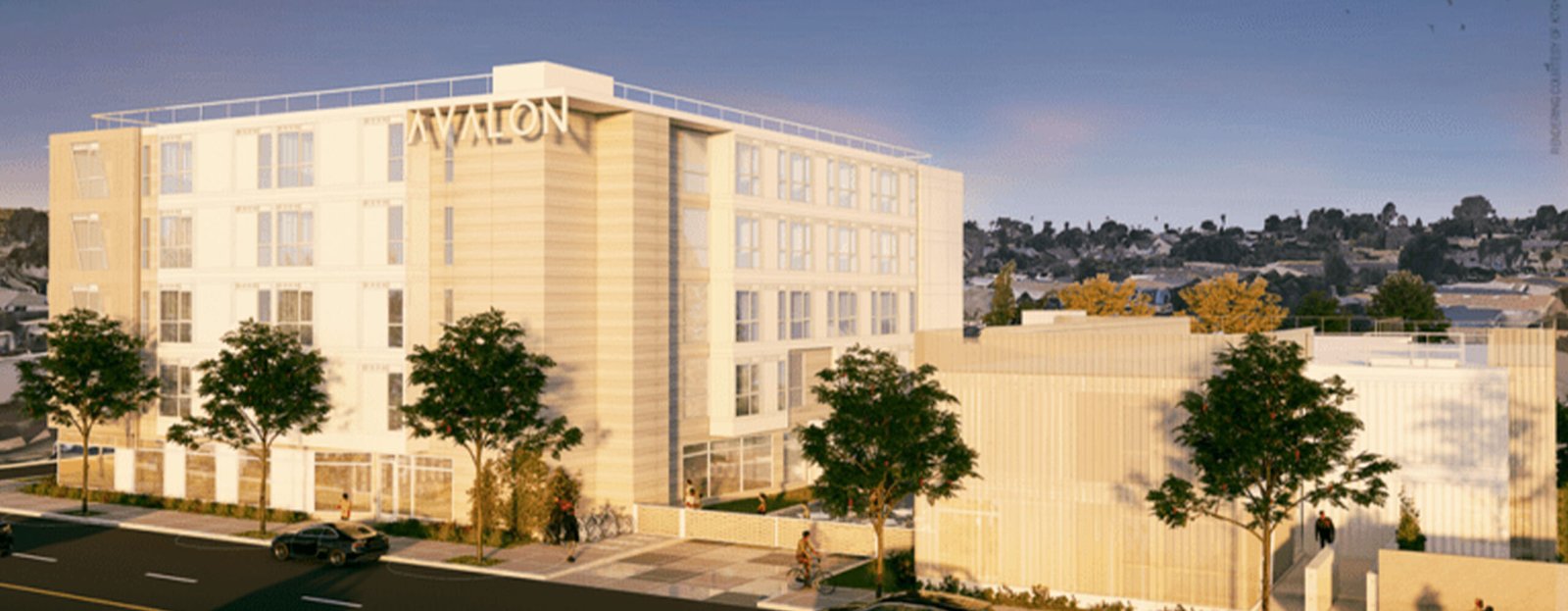
Hope On Avalon/Los Angeles, CA – When it comes choosing the elevator type for any job, Modular Elevator Manufacturing will help. We are not a one size fits all elevator company, trying to shoehorn projects into a singular kind of elevator. Also our vast experience and knowledge helps guide during the project in making the best choices.
That’s the case at our current elevator jobsite at the Hope On Avalon project in Los Angeles. On that project we partnered with Ed Grush – project general contractor, KTGY – project architect, Silver Creek Industries – modular supplier and Danny Moizel at HGB Modular – consultant. Working with that group is like working with the dream team of construction and all were a joy to work with. They are each knowledgeable, experienced, have well run organizations and are leaders in the construction industry and modular industry as well.
They came to us needing a 5-story elevator for a transitional and supportive housing project. The solution was a stackable hoistway and an in-ground hydraulic jack. Setting the fully installed elevator was complete in just a couple hours. We were glad to be a part of the project.
Using an in-ground jack was the best solution for the project. It has a fast, smooth ride that will serve the purposes well. The cab is made of tough Galvaneal steel with vandal resistant hall calls and buttons. It will handle the rigors of service for decades. We do not use wood core or particle board with the MEM Elevator System. Galvaneal reduced mold issues, chipping, breaking and warping that can occur with wood core cabs.
As you can see in the video, the hoistway is built with tough 4X4 inch steel meeting all requirements. All the elevator components are installed and then it is wrapped in drywall ready for cladding. The elevator and jack arrive on a truck and then the in-ground jack is simply lowered into the pre-drilled hole. The elevator bottom section is placed on top. Then, the upper section is lowered in the same way and connected. The right elevator for the right job. Fast and ready for electric and start up.


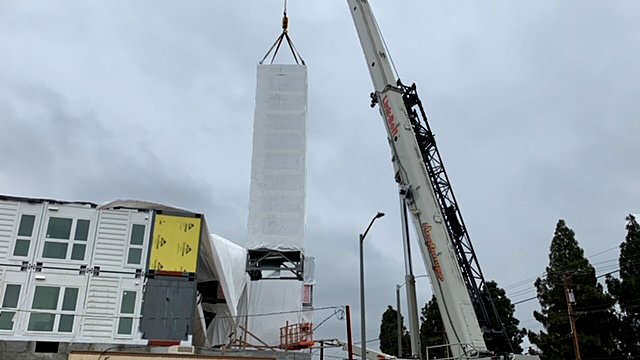
The mission of this project is important. The elevator and the Hope on Avalon project are crucial to combat the growing homelessness issues in Los Angeles. There are several benefits for supportive housing with the MEM system:
In conclusion, it maybe time to explore the possibilities further regarding supportive housing elevators. Let’s see if the MEM Elevator System can meet your needs. We would love to be a part of recommending an elevator type that suits your project best. You can click the button below for a Fast Track Quote for a project you currently are working on. However, if you want to explore it more, request a LIVE VIRTUAL TOUR. We would be happy to pull back the curtain. We will show you how we produce the industry’s most successful modular elevator solution.

Understanding the Elevator Industry – The elevator industry seems like a tough nut to crack. They tend to keep to themselves with their own language and their own priorities. They do not even like to talk about anything beyond your need for them. And so far the cloud of mystery is working pretty well. Motivations remain obscured. The technical jargon overrides any conversation. The result is the construction industry remains beholden to just a handful of providers. This is despite the elevator being a rather simple product. One box going up and down inside another box.
But can it really be that simple? It is more complex than that for sure, but the obfuscation by the elevator industry does not help their reputation.
In this blog post I am going to uncover just a few truisms of the elevator industry from the inside. In that way you will understand them or us better. Then you will be able to make more informed decisions regarding vertical transportation. So, here’s the short list. They may shock you and shake your current understanding of the elevator industry, but here they are. I will write about each in more detail below:
Now let me be clear, I am not passing judgement on the ethics of elevator companies. It is just important to understand the industry better. Our hope is that this will allow you to make better choices on your next project.
For most manufacturers, when you buy the product it ends the process. You have what you want. They have what they want (in the form of payment). Both go separate ways unless there is a problem. Not so in the elevator industry. It became apparent early on that there is a ton of money to be made in maintaining elevators. Also, as the product improved over time, it became even more profitable. The parts became more reliable and standards improved. The maintenance contract was born.
To substantiate that point, Otis in a recent SEC filings said, “New Equipment and Service, which, for the year ended December 31, 2019, contributed 43 percent and 57 percent of our net sales, and 20 percent and 80 percent of our total segment operating profit, respectively.”
Did you get that? That means is that new equipment or elevator sales while important are no where near as profitable as the maintenance contracts. Why does this matter? Because selling a type of elevator that maximizes profitability in the maintenance contract is the goal and not necessarily what you need.
One real quick example. In a low rise project often the most cost effective and best functioning elevator is a hydraulic unit. Of course that depends on several factors. Yet people have been upsold and bought a traction unit (one with ropes) when one is not needed in the least. The cost of the maintenance can be three times as much for the traction unit.
Understanding that can change perspectives on the unit required. And there are many other factors that can be influenced with that knowledge. One certainly would take more time to consider the maintenance contract and care less about the up front cost of the unit.
An often overheard phrase regarding elevators is whether parts and components are proprietary or not. Proprietary in the elevator industry does not generally mean what it does in most other industries. Proprietary components outside of the elevator business usually indicates something special. It is something that sets one product apart from the others. Or it can mean something they want to keep secret from the competition.
Not really the case with elevators. The purpose of “proprietary” parts in the elevator industry is not to hide some special trade secret or technology. After all it is just a box that goes up and down in another box. It is to prevent the building owner from hiring a different company to maintain the elevator. As mentioned above that is where additional profit comes from. If proprietary parts did not exist, any elevator technician could service any elevator regardless of brand. Proprietary parts primary purpose is to keep you locked in. Unlike most any other product, you just can’t buy a different elevator once the one you picked is in place. They have you and they know it.
Never shackle yourself to an elevator company by using proprietary parts. Ever. There are alternatives.
Have you ever been to a factory? I have had the pleasure of touring all sorts of manufacturing plants in my life time. From sausages to automobiles I have seen it all. In those facilities it is much like what you imagine. A product starts out in a simple form traveling down a line. During the trip components are added or processes completed. At the end, like magic, a brand new car rolls away or a delicious link of smoky pork sausage is made table ready.
If you are thinking about saving time and trimming costs, the traditional elevator cannot be your solution. Why? Because your jobsite just became an elevator factory.
That process is not what it looks like for big elevator companies. They do produce some components, but in real terms they are bundlers of other companies parts and pieces. They crate them, ship them and cobble them together on site. But the elevator is not manufactured at all, and the parts they actually make are limited. Believe it or not elevator companies have admitted that the real “manufacturing” takes place at the jobsite. The parts for all elevator companies come from a very limited pool of actual manufacturers.
It would be like ordering a car from Ford but instead of a drivable vehicle its like getting a crate delivered with all the parts. Then, they would send a crew to assemble it in your drive way. That is how traditional elevators are created.
This is important because a “quality” sales pitch is nothing more than that unless there is a different process all together. All elevator parts are largely the same and where they differ, they still have to meet the same rigorous standards. Could you imagine the quality issues and interruptions if your car were assembled in your garage? It really is crazy.
Why does that matter right? Really, why does it matter where the manufacturing takes place? It matters because that explains why it takes so long for an elevator installation. Also, if you are thinking about saving time and trimming costs, the traditional elevator cannot be your solution. Why? Because your jobsite just became an elevator factory.
If you choose a traditional elevator company, you will be a lot better off mentally if you just accept the way they do things. Then resign yourself to handing your site over to them until they are done. Things cannot change because the process does not change. You will never be able to hurry a project or even predict a completion date through the traditional elevator company. Believe it or not they have been installing the same way since before the Civil War…our Civil War…in the US. No other industry has moved that slowly regarding innovation.
Why are there delays? Because for the elevator to be assembled, you have to have the right factory conditions and all the necessary parts at your jobsite. One missing part can mean days of delays. If the building gets too cold the elevator crew leaves. This all slows down the process and gives little room for real improvement and no control.
The reason you have lost control of your project is it is now a manufacturing factory for an elevator.
This is usually where you would find the pitch. I have made a compelling argument now I just need to close the deal right? Wrong. At Modular Elevator Manufacturing we know the MEM Elevator System is a much better alternative than traditional elevators, but we also know that acceptance will not come overnight.
The traditional elevator companies are engrained in the construction industry. We know this! So although we care about sales, we care more about the long run. Education is the key. We need to simply inform people as to why things are as they are. Over time we will be viewed as the solution we are and we are willing to accept that. In the mean time we want to be a part of the discussion, a resource and able to give important elevator industry information. We are hoping to bridge the gap between the construction industry and our industry that will lead to better processes, innovation and installation. Our better way through modular elevators will win you over eventually. The MEM Modular Elevator System is actually factory produced and have tons of benefits, but we know recognition of that comes with time.
However, if you want a tour of our facility just click the button below. You can also request a quote if you have a project in mind. We would be glad to supply you with thumbnail numbers.

Hope On Hyde Park/Los Angeles, CA – MEM Experience paved the way for participation in this worthwhile project. When looking at elevator options, several considerations were made, but the experience of MEM (Modular Elevator Manufacturing) and TL Shield & Associates as the onsite elevator team paved the way for this exceptional project. MEM is proud to be a part of this project with C. W. Driver and they are grateful for what we bring to the table. “We appreciate MEM’s experience in the elevator industry. They helped keep the project moving forward and on time.” – John Kately, Project Executive, C.W. Driver.
Why are we so proud? Hope On Hyde Park is a big deal as a modular project but also due to the building’s mission. The project uses locally fabricated modular building units, including a state of the art, easy installing MEM Elevator System. This will create a modern and affordable transitional housing community for the Los Angeles homeless population.
The five-story development will offer studios and one-bedroom apartments on a 0.49-acre site. Residential services and a boxing gym will be located on the ground floor. The 98-unit building will be constructed around a central courtyard, providing privacy, safety, and a deepened sense of community. Parking spaces will be provided for social services staff while each resident will have a bike storage space. Floor to ceiling glazing along the amenity space will engage the community and brings movement to the street.
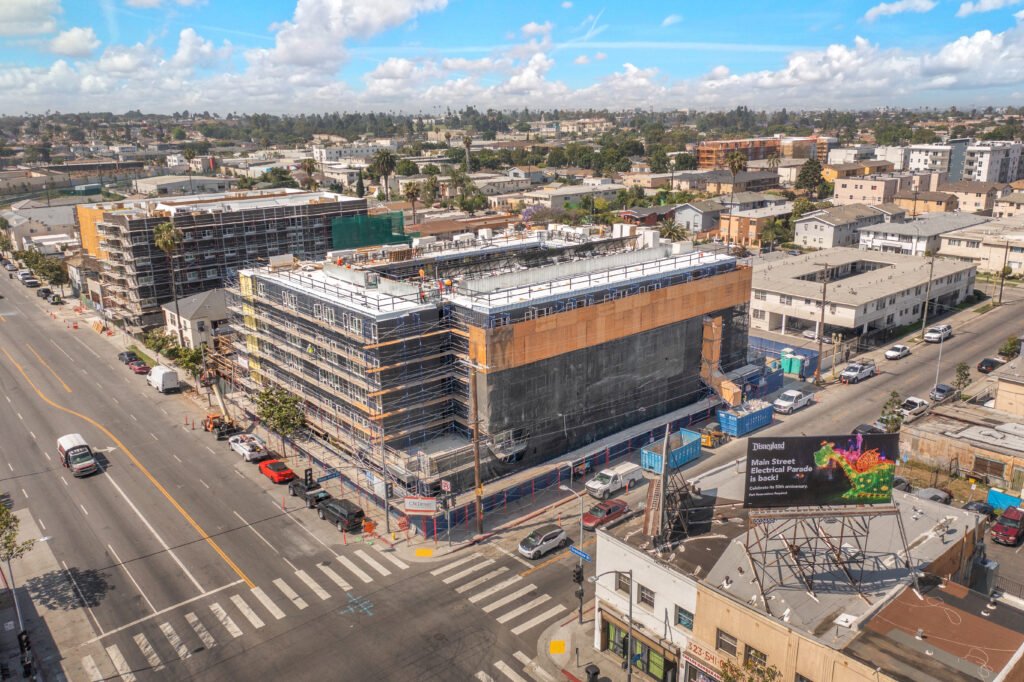
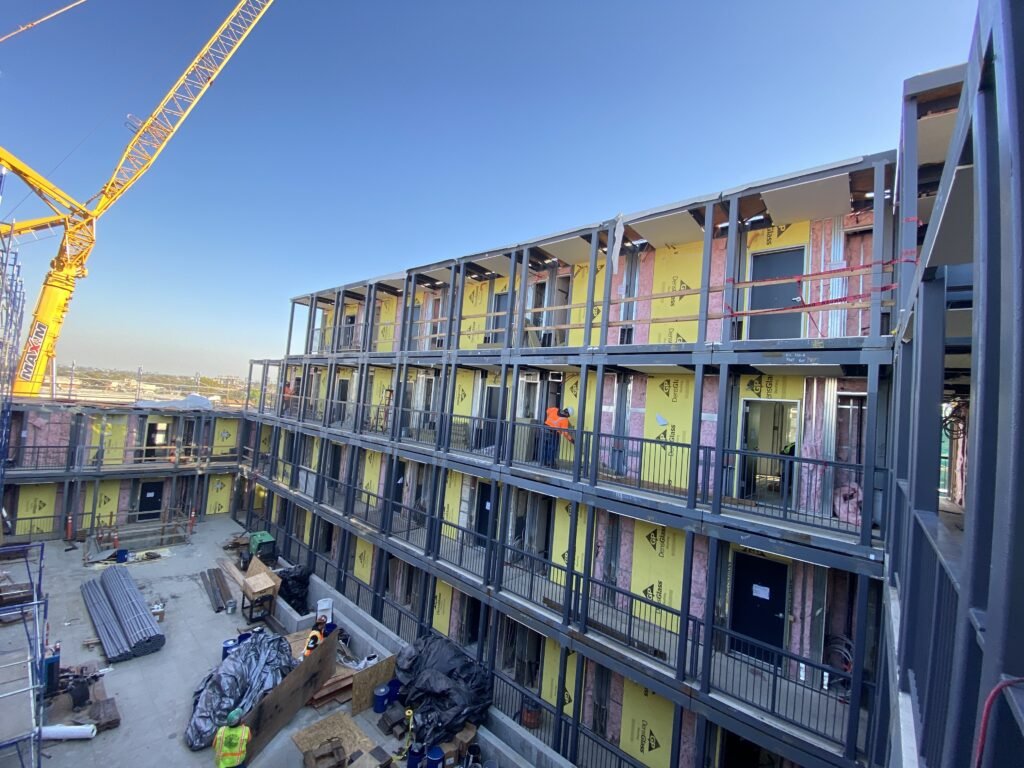

The elevator for the five-story project, as you can see in the video above, was set in no time. Quite impressive even for veteran project managers. “Seeing a fully installed elevator lowered into place and set in four hours was amazing.” – Luis Cadiz, Project Manager, C.W. Driver.
The process begins with placing the mode of conveyance, an in-ground hydraulic jack. It goes in first. Then the lower a portion of the fully installed elevator and hoistway gets craned into place. Once it is set, the second section of the elevator is lowered as well and locked in. The elevator came in two sections due to transportation needs and is not unusual in the least. The units are designed to be stackable.
The entire elevator set took less than four hours and everything is already inside including the elevator car and wiring. Once power is available onsite the MEM Elevator System is ready to go. It will then be started up, adjusted and scheduled for inspection. An easy, fast, timesaving solution. The elevator is off the critical path and the all too important purpose of the building can begin changing lives sooner than if a traditional elevator was used.
TL Shield & Associates set the elevator and will be in charge of start up as well. They and Modular Elevator Manufacturing was chosen due to the expertise they provide and the superior product they offer. They have been the leaders in the modular elevator field for more than two decades.
Tough steel makes up the MEM Elevator System hoistway with production occurring in a factory environment. Installation of all the elevator components and parts then takes place. Loading and shipping occurs next when the site is ready. In four hours you will have a fully installed, commercial quality elevator ready to be started up and used.
The mission of this project is important. The elevator and the Hope on Hyde Park project are crucial to combat the growing homelessness issues in Los Angeles. There are several benefits for supportive housing with the MEM system:
In conclusion, it maybe time to explore the possibilities further regarding supportive housing elevators. Let’s see if the MEM Elevator System can meet your needs. You can click the button below for a Fast Track Quote for a project you currently are working on. However, if you want to explore it more, request a LIVE VIRTUAL TOUR. We would be happy to pull back the curtain. We will show you how we produce the industry’s most successful modular elevator solution.

There are distinct advantages to the use of modular elevators for parking structures. This is especially true when adding the MEM Elevator System to you next project. Conversely, adding a conventional elevator to a new or existing parking facility can cost hundreds of thousands of dollars. Beyond that the process can take months. The MEM Elevator System is an architectural solution, which effectively deals with these issues, saving you time and money. Those are distinct advantages of the modular elevator and set us apart from other alternatives.
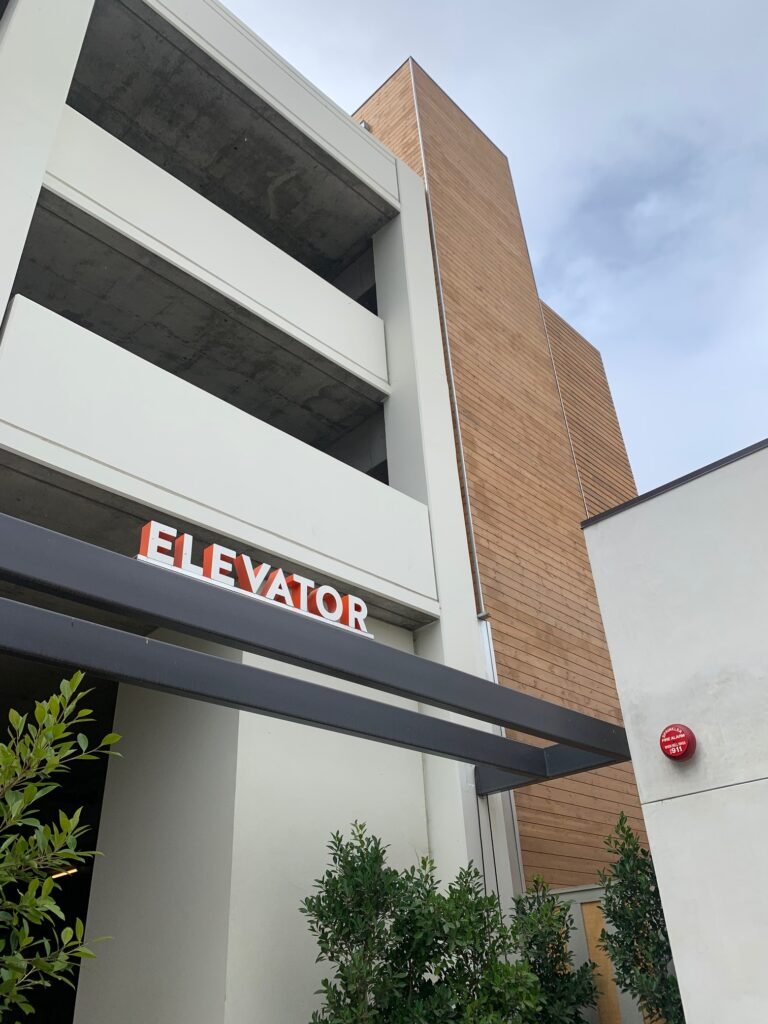
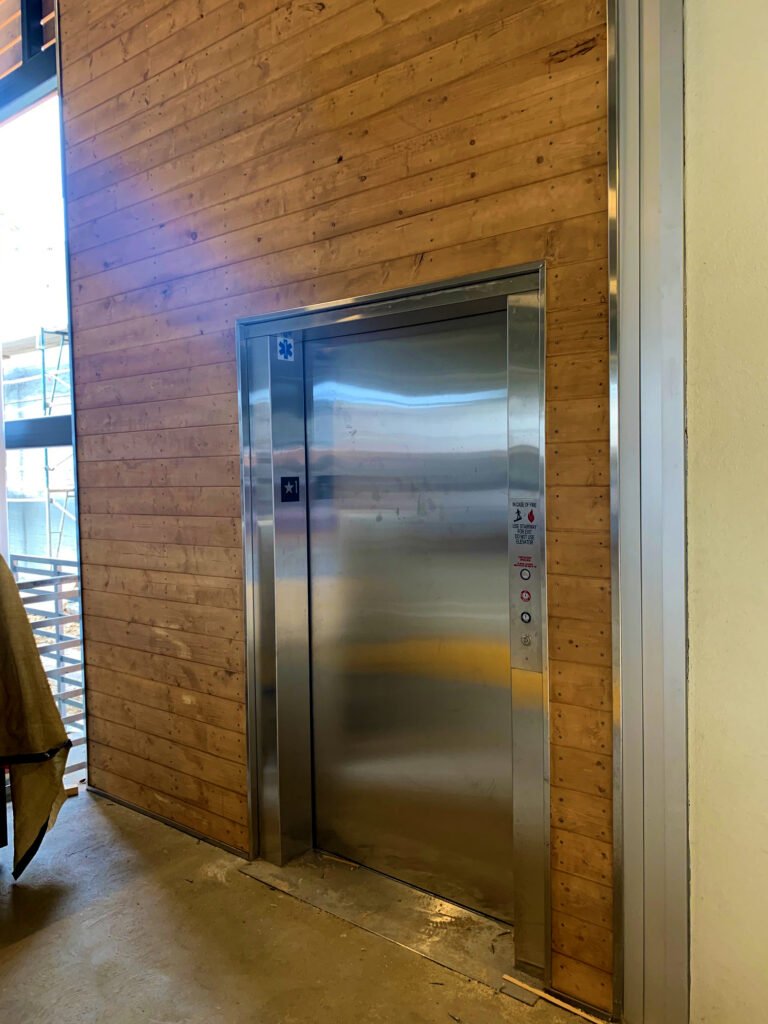

The MEM Elevator System, is a prefabricated the hoistway which is manufactured off-site in a remote location. This allows the modular elevator to be manufactured in the plant simultaneously to the construction of the parking structure.
Unlike conventional elevators, modular elevators don’t need to be an inherent part of the parking structure they are servicing. Instead, they are easily attached to the existing structure. This often is on the exterior of the building without having to share the same foundation.
For an existing parking structure that is adding floors and needs a vertical transportation system, a modular elevator is the ideal solution. It extends the life of the parking facility when adding a modular elevator. You will lose no square footage – all while ensuring accessibility for everyone.
Also, placing the modular elevator on-site before the parking facility is fully built is possible. It can even can be used as the construction elevator – as long as power is available.
See, regulators typically require a temporary construction lift for projects over three stories. The alternative is an elevator to be installed at a job site. A permanent modular elevator can be used to meet these requirements. It then eliminates the need to rent and expense a temporary lift. That in itself demonstrates distinct advantages of the modular elevator.
Additionally, modular construction offers shorter build times; typically 50 to 60 percent less than a traditional on-site construction project. A modular elevator can be up and running before a conventional hoistway is built. This provides an earlier return on investment and lower professional fees.
The two most common vertical transportation solutions used in parking facilities are hydraulic and traction machine roomless (MRL) elevators. Both are available full-sized for commercial use and both are equal in performance and quality.
Hydraulic has the advantage of being easier to install and maintain. This makes them a less expensive choice in the long run. As a result hydro elevators are the recommendation we most often make. They are in use in parking structures between two-to-five stories and are available with holeless-twin or in-ground jacks. Holeless hydraulic elevators use above-ground cylinders and are used in sustainable or cost-sensitive projects with two to three floors. With the holeless elevators you can eliminate the unknowns related to drilling for in-ground jacks.
The in-ground hydraulic system can easily accommodate five stories or even higher. It provides a smooth ride and lower maintenance costs overall.
The traction MRL is an option, that offers little more than the hydraulic units. It is marginally faster (literally seconds) and can achieve higher total travel. However, the additional speed comes with a cost of higher maintenance fees.
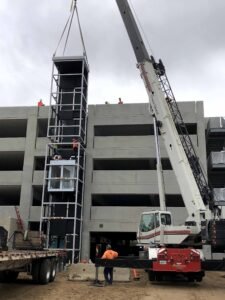
It is important for the contractor to work closely with the modular elevator manufacturer. They should be involved when planning and installing a modular elevator for a successful installation. Logistics and timing play an important role in maximizing the financial opportunities that modular elevators afford. The MEM team offers support, coordination and communication in the process.
The first step in the installation process is pouring the concrete elevator pit. The anchor bolt template from MEM is useful for precise positioning. Second, once the elevator is set in place, it is attached to the anchor bolts and verified to be plumb. You now have a fully installed elevator.
Next, the fully-assembled modular equipment room is set into place. This installation process is usually completed by lunch time. No kidding.
After the elevator is set, electrical, fire and phone services are provided and final adjustments are completed. Upon inspection and approval by the appropriate jurisdictions, the elevator is ready for use in a matter of days.
As you can see modular elevators offer many benefits over conventional elevators. For all low and mid-rise applications in new and retrofit construction we are the preferred solution.
Lastly, we can customize the ready-to-use MEM Elevator System. In that way we can meet the needs of any project. And the end results are indistinguishable from conventional construction. They are also available with vandal resistant features because we all know a parking garage elevator needs to be tough. One thing for sure there are distinct advantages of the modular elevator for the parking industry.
We hope we have laid out a good argument for the advantages of the modular elevator for parking structures. So if you have any interest contact us at any time. We will help you think though potential uses. If you have a project in mind, click the Fast Track button below. You will be provided a thumbnail number and receive additional information. If you would like to see how we create the elevator, you can register for a Live Virtual Tour. Or come visit our factory in person. We would love to show off a bit.
Never miss a blog post again. Sign up for our monthly email newletter. Get important information about elevators, the modular industry and more.
